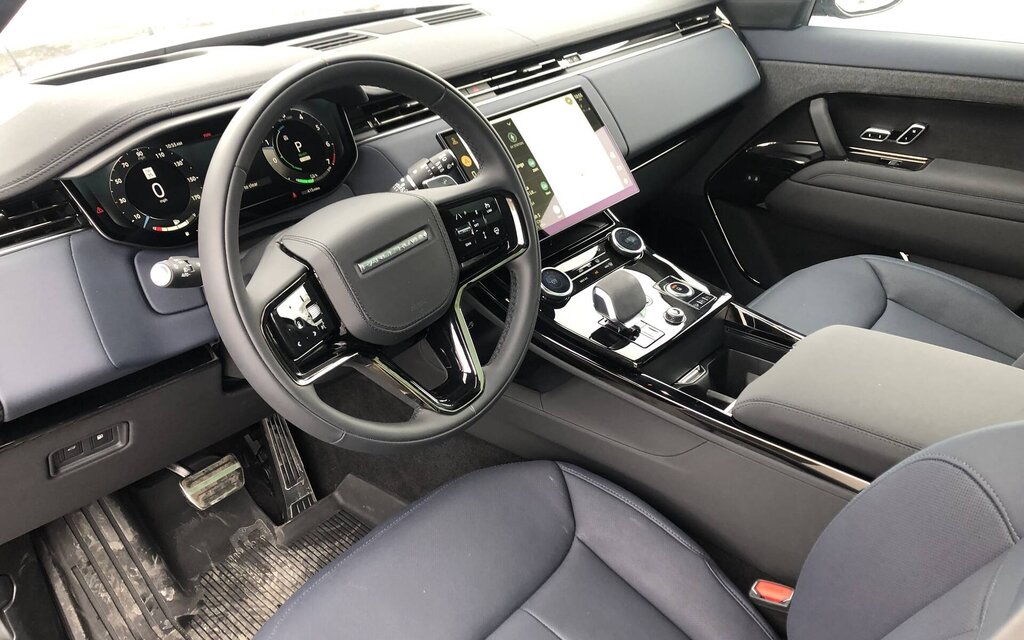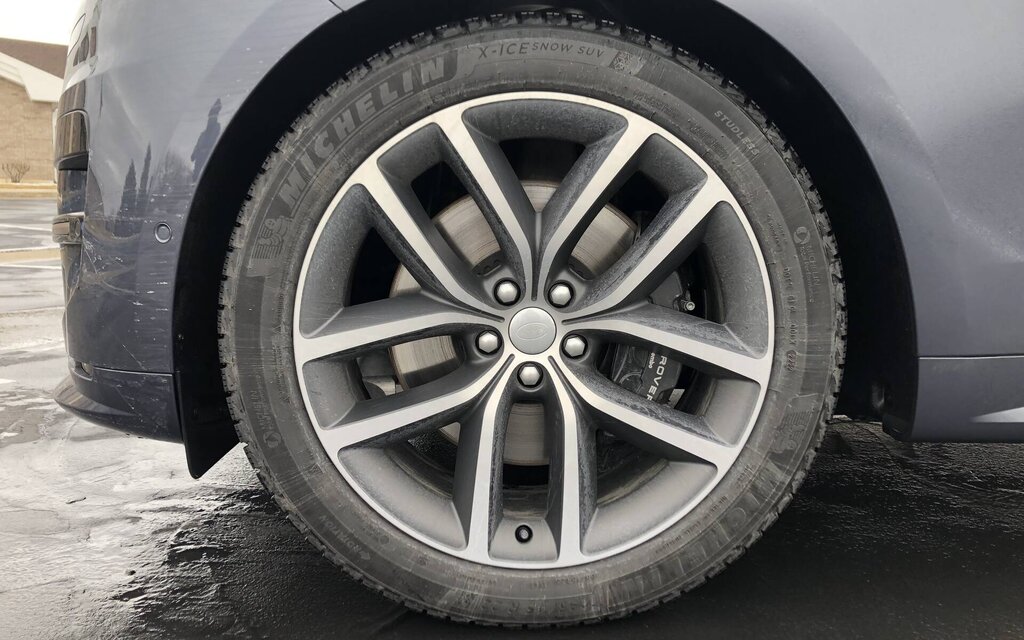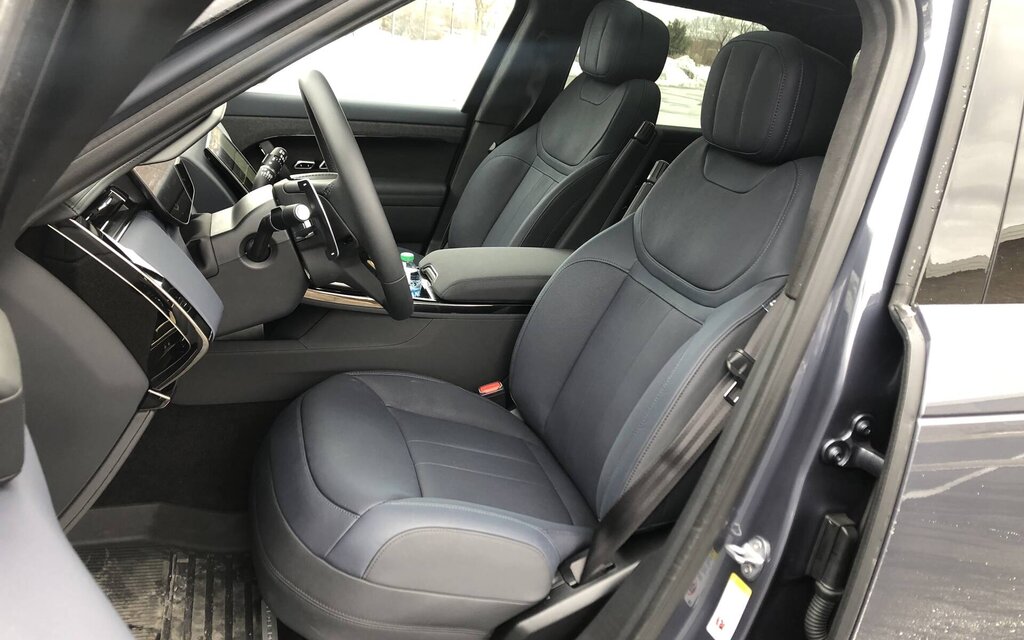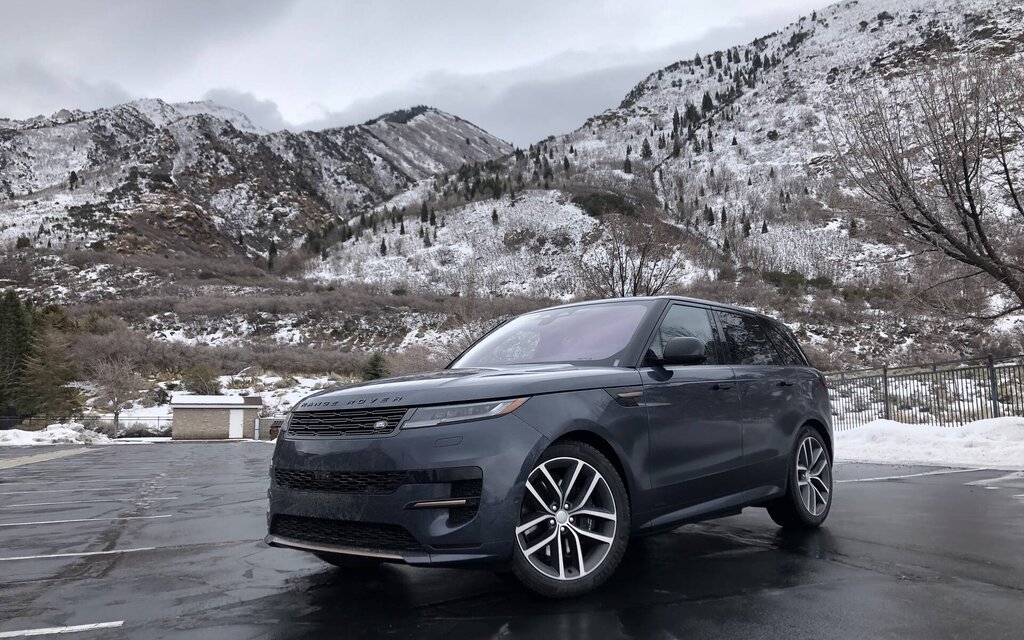The Range Rover Sport is completely renewed in 2023. The design retains a certain affiliation with the outgoing model, but is now more refined. The front part is distinguished above all by its thinned headlights, its bumper with revised air intakes and its grille with a different grid pattern.
In profile, we notice the integrated door handles. And at the rear, it is the now rectangular taillights, the smoothed tailgate and the different shape of the diffuser that challenge.
However, the main change of this generation is hidden under the hood. It is a rechargeable hybrid engine. We still find a turbocharged 3-litre inline 6-cylinder, but associated with an electric motor. The total power of this powertrain amounts to 434 horsepower and the torque to 457 lb-ft.
The manufacturer has opted for a battery with a capacity of 38.2 kWh. An already respectable size which gives it a theoretical range of 51 miles, or 82 km. This is a rather flattering value, which allows you to carry out the majority of your daily trips without burning a drop of gasoline.
Photo: Julien Amado
Luxury plug-in hybrid
We tested the Range Rover Sport P440e in the US in the mountains bordering Salt Lake City. An environment similar to ours, with rather cool temperatures and even a big snowstorm during the afternoon!
The model chosen by the manufacturer was the luxurious Autobiography sold for 104,200 USD. On our side of the border, it corresponds to the HSE version, the most opulent. By adding the options identical to our test model as well as the Bleu Varesine shade, we arrive at a total of 137,393 CAD.
Monthly, this still represents $3,091 to finance the vehicle over 60 months at a rate of 6.49%. And as you’d expect, that makes the Range Rover Sport PHEV ineligible for any government incentives.
Once the door is open, you settle into a richly endowed and nicely done interior. Compared to the previous generation, the evolution is noticeable inside, with a dashboard now surmounted by a 13.1-inch central screen. The layout of the controls on the center console has also been redesigned. Again, no revolution, just a change in continuity.

Photo: Julien Amado
That said, it would have been wise to review the positioning of certain controls, such as the heated seats which require two manipulations to benefit from them (a button, then a press on the screen). Not to mention the haptic buttons at the bottom of the center console, which are sometimes unresponsive and require pressing several times before the command is actually selected…
The seats, comfortable and well enveloping, call for no criticism. It’s easy to find a good driving position and you can ride for a long time without feeling excessive fatigue. A small downside, however: the instrumentation facing the driver has a slightly too pronounced angle when the seat is adjusted to the lowest. Without being huge, the space in the cabin is sufficient. The trunk, whose loading sill is a little high, offers enough space to travel with four people.
Silence it grows!
We left with the battery fully charged. The vehicle announced a theoretical range of 58 miles, or 93 km. With -3° displayed on the dashboard when hitting the road, the temperature was not really a handicap for the Range Rover Sport.
Thanks to its high torque, the P440e takes off quietly but still pushes you in the back. Never violently, but with enough grip to move this 2,658 kg behemoth. The 0 to 100 km / h shot in just 5.8 seconds testifies to this. In addition, the soundproofing has been very well worked by Land Rover. We are delighted to evolve in silence, which reinforces the impression of serenity that emerges from the vehicle.
The kilometers pass, the snow begins to cover the asphalt, but the Range Rover Sport does not care. Fitted with Michelin X-ice Snow, very convincing tyres, he continues his journey imperturbably. Some paths mixing earth and mud are dispatched as a simple formality. And despite the 22-inch-diameter rims, we appreciated the ride comfort, which remains very good, including in the few potholes we encountered.

Photo: Julien Amado
After a while, we finally heard the gas engine kick in. A quick glance at the odometer tells us we’ve covered 58 miles (93 km), which surpasses the official data! This is one of the strengths of the vehicle, especially since the gasoline engine has not been particularly economical once the battery is exhausted.
By being very careful with the accelerator, we managed to get down to 11.3 L/100 km. But having the right foot a little heavier, the indicator quickly climbed to 13.2 L/100 km. Knowing that we have not evolved in the city, the 6-cylinder is not really fuel-efficient when it can no longer rely on the battery to move forward.
The question of reliability
If you read the Car Guide on a regular basis, you know that predicted reliability is one of the weak points of Land Rovers. The manufacturer has already communicated that it was doing its best to improve the situation.
During our test drive, we unfortunately experienced two problems. The first is a vibration on the left side of the hood when the wind picked up. There was no risk of it lifting up and hitting the windshield, but it’s never nice to see its hood moving like that with crosswinds!

Photo: Julien Amado
After dinner, we also saw a warning light on the dashboard that said “problem with the suspensions, have the vehicle checked”. Turning off the engine and restarting it solved the problem, so it was just an electronic bug. Either way, those are hard things to forgive for a vehicle that sold for over $130,000 that we only drove 100 miles…
To conclude this test drive, if you are looking for a rather exclusive, well-finished, high-performance vehicle with convincing electric range, the new Range Rover Sport P440e could be for you. Keep in mind, however, that it will have to live with a few ergonomic shortcomings, disappointing gas mileage once the battery is depleted, and expected reliability that remains below average.
